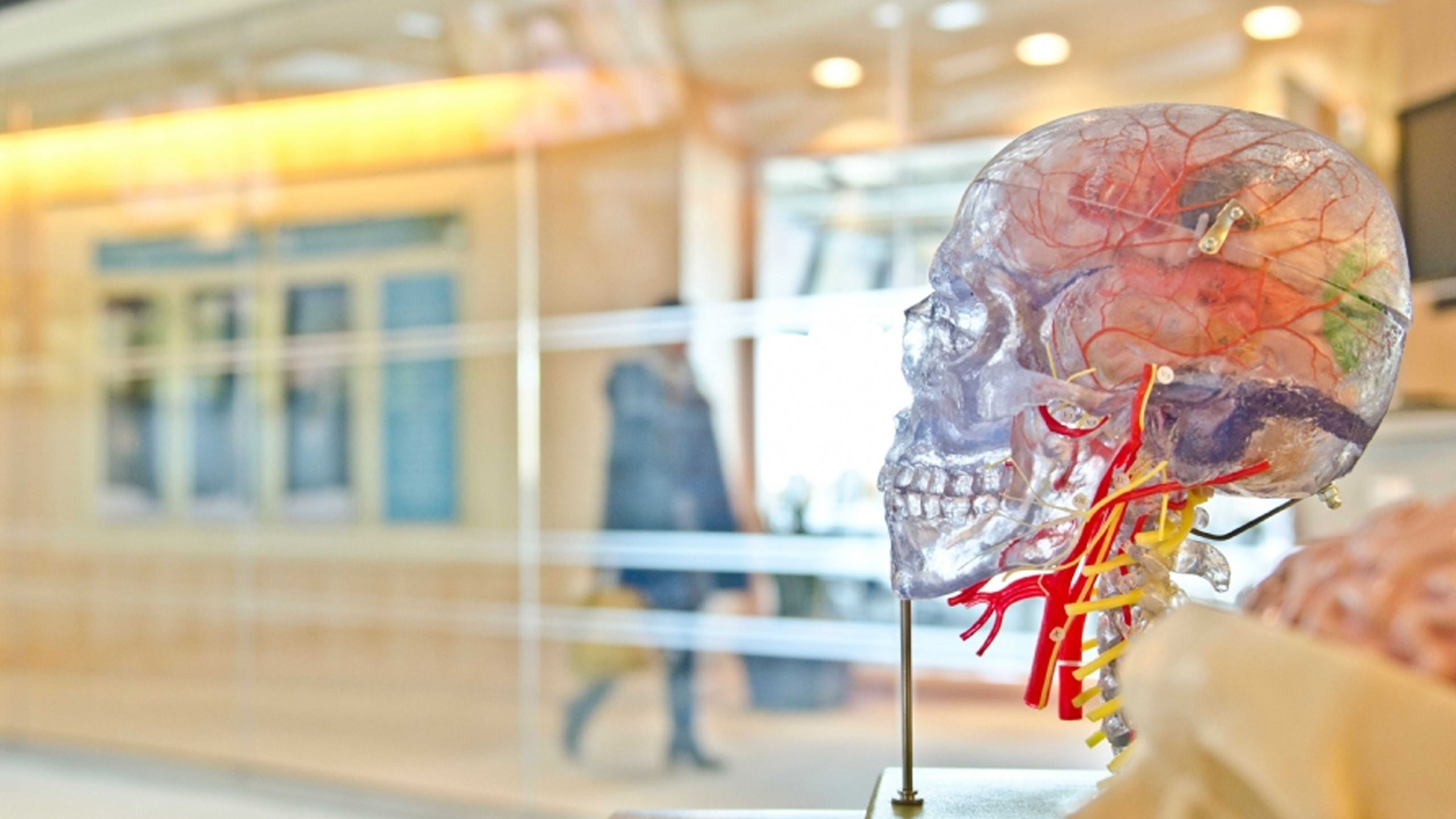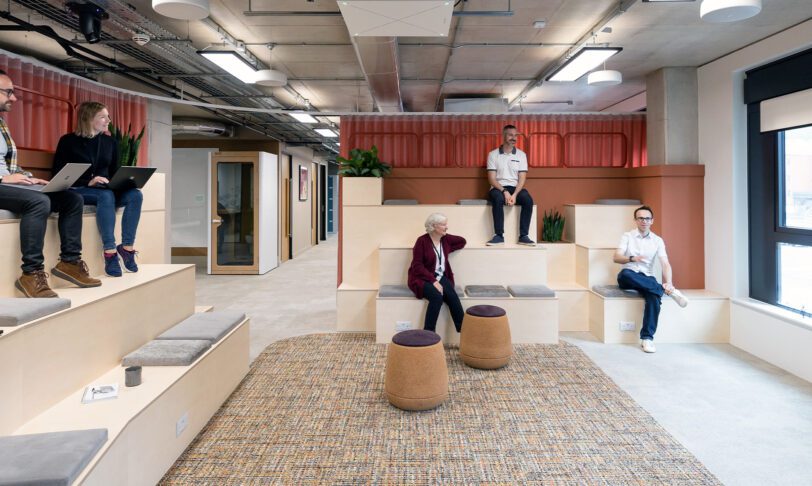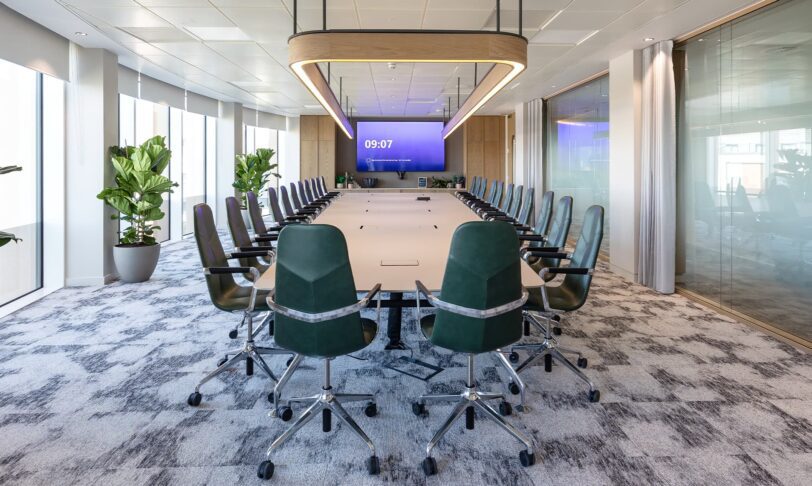Great minds think differently: the benefits of a neurodiverse workplace
A neurodiverse workforce offers different ways of thinking, unique strengths and skills, and increases business success. Therefore, it’s important businesses recognise and cater for diversity.
What is neurodiversity?
Neuro [brain, nerve or nervous system], diversity [the state of being diverse; variety].
Neurodiversity: “The range of differences in individual brain function and behavioural traits, regarded as part of normal variation in the human population.”

Workplace design cannot be approached as a one-size-fits-all solution. There’s an infinite range of differences in how our brains function, learn and process information. Neurocognition influences our personality, how we behave and what we’re good at. We all experience the world differently and the workplace needs to support everybody who uses it. The office is a powerful tool to enable great performance, and creating optimal space to engage as an employee contributes to organisational success. Affording choice in design solutions supports neurodiversity in the workplace by allowing people to choose the most suitable setting for their individual needs, role and tasks.
It’s estimated that ~15% of the population are neurodivergent. Neurodivergence is described as cognitive functioning that is different from what is considered as “normal” or a neurotype that falls outside the “norm”. Examples include ADHD, autism, dyspraxia and dyslexia. The term ‘neurotypical’ describes brains which function within parameters of neurocognition that aren’t medically defined as disorders or culturally defined as neurodivergent – there’s no such thing as a ‘normal’ brain. Neurodivergence has historically been characterised by deficit terminology e.g. attention deficit hyperactivity disorder or autism spectrum disorder. Terminology has started to shift the focus away from depicting neurodivergence as an impairment and instead highlighting natural differences between people.
The range of variation in human neurocognition means that naturally each workforce is diverse. The workplace needs to reflect these differences to support every person with concentrating, managing distractions, processing information and communicating effectively. Diverse skillsets need to be accommodated and unique strengths should be leveraged for collective success. Workplace strategy and design should enable users to be the best version of themselves, supported for exactly who they are and how they work most effectively.

Image source: Google
Invisible differences
A lack of awareness and understanding has often led to hiring processes, management practices and workspaces being designed only with neurotypicals or extroverts in mind. Open plan offices, networking and loud personalities in the workplace mean it’s easy for many to feel left out or overlooked. Those in neurominority groups have had to adapt to a neurotypical world, often being described as feeling like they are left handed in a right handed world. Designing a workplace that reflects individual differences in neurological functioning will enable every employee to thrive.
Personality
The workplace should embrace the neurodivergence between personality types. The introversion-extroversion spectrum is one of the most heavily researched topics in personality psychology. Where we fall on the continuum shapes our lives, influencing how we choose friends, partners, careers, and how we resolve conflict and relax. Our personality dictates how likely we are to take risks, exercise and learn from mistakes. At least one third of us are estimated to be introverts.

Neurology
A major differentiating factor between the brains of introverts and extroverts is all about where we gain our energy. Lively social interactions leave extroverts energised, whereas introverts recharge by spending time away from others. The consensus among psychologists is that these differences are explained by our brain chemistry, where introverts and extroverts have different innate levels of cortical arousal. Psychologist Eysenck (1967) coined the biological model of personality, which predicted that personality traits were determined by biological disposition, reflected in our brain pathways, neurotransmitters and our nervous systems. Extroversion was marked by pronounced engagement with external stimuli and characterised by high sociability, talkativeness, energy and assertiveness, in order to raise their naturally low cortical arousal levels. Eysenck hypothesised that introverts tend to avoid external stimuli to minimise their already high cortical arousal levels.
Neurological differences in personality are explained by the response to neurotransmitters dopamine and acetylcholine. Both are chemical messengers produced in the brain which are linked to our reward systems. Dopamine, often called the “happy hormone”, provides us with the motivation to seek external rewards such as socialising, exercising, eating and professional achievements. We get a hit of energy when we move and talk, take risks or meet new people, or when we experience environmental stimuli. Acetylcholine is released when we turn our attention inward. e.g. when focussing intensely, reflecting or thinking deeply. Studies have shown acetylcholine to barely register with extroverts, yet it makes introverts feel relaxed, alert and content. As a result, those who use acetylcholine on their dominant brain pathway are likely to seek areas that allow quiet focus and introspection.
Research has shown extroverts to be less sensitive to dopamine, and are therefore more likely to seek out stimulating surroundings to feel energised and reach optimal performance. As a result, in the workplace they often work best in busy, buzzing atmospheres, surrounded by chatter, music and bright colours. On the other hand, introverts typically have a higher dopamine sensitivity and baseline level of arousal, making them more readily over-stimulated by the environment. Subsequently, they need less sensory stimulation to reach optimal functioning and have less tolerance of constant noise and busy environments than their extraverted counterparts. As a result, they typically favour quiet.

Other psychological theories such as the Yerkes-Dodson Law support the idea that we each have an optimal level of stimuli for peak cognitive functioning. Too much neurological arousal or “mental alertness” from external stimuli can lead to stress, lack of productivity and inability to concentrate, whereas too little may lead to boredom and diminished motivation. Therefore, in order to enhance our cognitive, physical and emotional functioning, we need to ensure that office design facilitates an optimal level of environmental stimuli. This can be challenging because different personality types have different base levels of arousal, which subsequently affects how sensory information impacts performance. This means that individuals will react differently to the same sensory conditions in their workplace. Some individuals find certain factors of design over-stimulating and stressful; the sights, sounds, smells, air quality, temperature and textures in the workspace can impact affect the ability to think, reason and perform at work.
The optimal arousal threshold varies significantly between individuals and also for the type of task they are working on. Straightforward, less cognitively demanding tasks might be performed better in environments which increase level of arousal to boost motivation. At the other end of the scale, with complex tasks being cognitively demanding and increasing the level of arousal, quiet environments are often preferable to maximise performance.
Neurological differences need to be reflected in the workplace by including a variety of work settings to suit individual and task differences. Areas that limit exposure to noise and distraction are important for quiet focus work as well as recharging and reflecting post-meetings and between tasks. Affording people with choice allows them to control the optimal level of stimuli in their working environment and the connections they want to surround themselves with.
Supporting neurodiverse individuals in the workplace
Failing to support individual differences can lead to:
- Over or under stimulation
- Inability to concentrate
- Burnout
- Stress
- Absenteeism/presenteeism
- Low energy and motivation
- Underperformance
- Diminished cognitive functioning
Helpful considerations for a neurodiverse workforce
Flex-commute – A flexible commute time would benefit those who find the overwhelm of rush hour traffic extremely stressful to navigate.
Autonomy – Explain the why and what and give freedom on how to complete the task at hand. Ensure to provide instruction/information in multiple modes such as verbal, visual or written format. Afford employees with flexibility to work in a way that allows them to perform at their best.
Return to work approach – Many people have been working from home since March 2020. Some may need a gradual phased return to manage energy, level of stimulation and social exposure. This will help to avoid burn-out and feelings of being overwhelmed. It is important to give clear and consistent communication of new rules or guidelines, giving advance warning and explaining what is happening and why.
Unspoken etiquette – Many autistic people have literal understanding of language and may not pick up on ‘unwritten rules’ around office etiquette. Ensure to clearly communicate any changes to ways of working or the physical workplace. A pre-visit/virtual tour which highlights the function of each space can help people to familiarise themselves and alleviate anxiety.
Tactile defensiveness – Working from home has afforded those with sensory processing disorders with choice of clothing. Inclusive working practise might allow choice of clothes, or adapt dress code guidelines accordingly.
Level playing field – Identify alternative mechanisms for contributing to group discussions and decision-making. Some people feel more comfortable to contribute in virtual meetings as they feel they are working on more of a level playing field with colleagues. It’s thought that new ways of working have fostered inclusivity, with the disability unemployment rate reducing from 18.9% in April 2020, to 9.1% in January 2022 (WorkLife news).
Safety – Some people might feel safer at home away from microaggressions that they experience in the office. Microaggressions are small, innocuous comments that reflect assumptions about people based on some element of their identity.
Activity-based working (AKA agile working) – Unassigned desking can trigger anxiety for individuals who prefer routine and familiarity. Changes to desk working can be problematic for autistic employees who thrive on routine. A desk booking system can allow employees to choose their favourite desk for the day in a location that suits them. Activity-based working makes differences less apparent and fosters equality and integration. Adopting an agile working approach allows people to control the optimal level of sensory input, which is directly correlated with performance, wellbeing and job satisfaction.
Hybrid working – Some prefer the structure and routine of a commute and office working, whereas others may find that working from home suits them better and allows them to control the level of sensory stimulation around them. Taking a hybrid approach may afford balance over the alone : social time ratio. Remote working has also meant that the challenges of getting into the office do not have to be faced.
Designing for Neurodiversity
How do we create a workplace in which the whole spectrum of our team can be supported and productive?
Variety – The diversity of the workforce needs to be reflected in the workplace in order for everybody to thrive. Workplace design needs to accommodate for differences in learning, processing and communicating. Booths, nooks, alcoves as well as neighbourhoods and clusters allow people to control their level of sensory and social exposure in their working environment. As well as collaborative settings, provide calmer areas for solitude and contemplation set aside from the main buzz. Even extroverts need time alone for relaxing and for introspection.

Sensory processing – Consider individual differences in sensory processing (how we respond to incoming sensory information). The sights, sounds, smells, and textures in the workplace impact the ability to think, reason and perform at work.
- Garish patterns, colours and lighting play a role in overloading cognitive processing.
- Consider the position of kitchen/café facilities in proportion to work settings and how noise and odours might affect someone with a sensory processing disorder.
- Some people are more easily under or overstimulated and distracted by surrounding noise than others. Alternative work settings as well as noise-cancelling/acoustic panelling can be effective in controlling sound.
- Fabric textures can be uncomfortable for those with tactile defensiveness.
- Reduce visual distraction by locating desks away from the main thoroughfare of the office.
- Lighting should vary throughout the workspace to afford control over light exposure level.
- Create a more tranquil environment by incorporating biophilic design. This helps with reenergising, enhancing creativity and problem solving. Research has shown that nature sounds support faster recovery from demanding tasks compared with traffic and ambient building noise.
Physical cues – The need for spatial order and ease of wayfinding is intensified for some individuals. By creating physical cues in the design such as edges, focal points, borders and paths, people can infer the intended use of the space and navigation is made easier. This reduces the cognitive load needed to understand the space.

Privacy – Purpose built quiet spaces allow people to decompress away from the desk. Wellbeing rooms provide privacy and quiet space for prayer, meditation, new mothers, neurodivergent individuals and those going through the menopause. Such spaces can be valuable for those with invisible disabilities, such as autism or ADHD, to rejuvenate in a space away from the desk, to reflect after meetings or if the environment has become overstimulating. They are designed with muted colours, soft furnishings and lighting to create a calming environment.
Inclusive technology – Many programmes/applications offer a wide range of accessible functionality features. From reader tools to spell checker and mind mapping software, inclusive technology can support individuals to process information in other ways, help with managing their time and make communication easier.
Noise levels – Issues with noise in the office are very common in all businesses and industries. Incorporating different areas throughout the workplace, where volume levels differ, will enable people to choose their ideal environment and control their exposure to noise. More attention than ever should be paid to acoustics – we expect that noise tolerance has lowered even more since most people have adjusted to their home working environment. Workplace design should buffer acoustic distractions by including spaces with good soundproofing properties and strategically positioning quiet focus settings away from busy areas. This might include partitioning, ‘broken-plan’ layout and staggered entrances. Lipreading can be challenging when there is a busy background demanding attention.
Summary
The Design Council summarise inclusive environments as:
- Welcoming to all
- Flexible
- Responsive to user needs
- Intuitive to use
- Offer choice in design solutions
- Convenient so they can be used without undue effort and maximising independence
People are at their best when they feel included and valued. The workplace upon needs to be welcoming to all groups. Our designs take into account that people experience the world differently based on their overlapping identities including race, gender identity, disability, sexual orientation, neurological functioning and social background. Equality, diversity and inclusion is woven into and underlies every workplace design, ensuring that we make places which reflect the diversity of people who want to use them.
Call us on 01225 485 600 or email us at [email protected] for a friendly chat about your office design.



